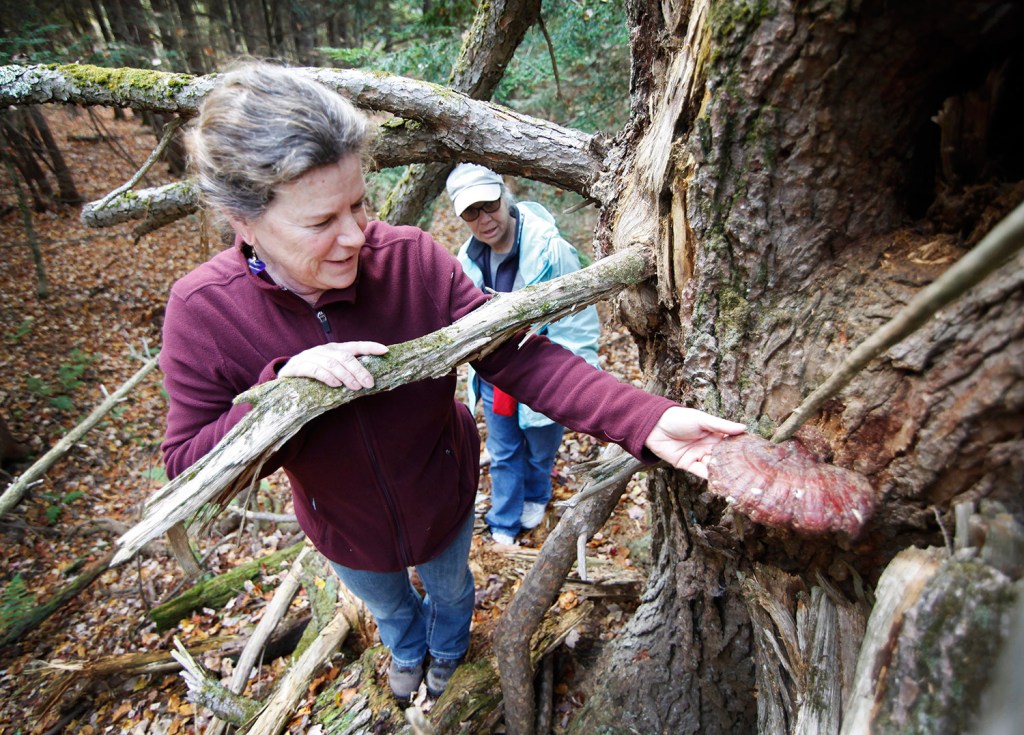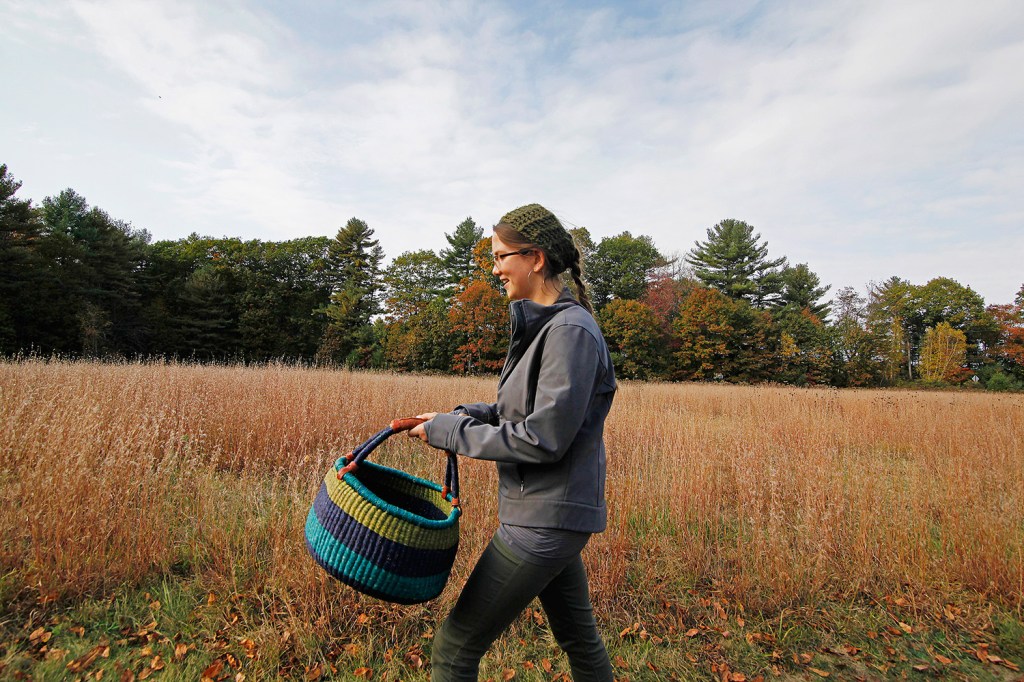NORTH BERWICK — Mushroom identification walks have become more common in Maine as interest in foraging for wild mushrooms has grown, but it’s an activity that requires caution.
That message was clear when the Great Works Land Trust led a mushroom identification walk in October.
“You have to be careful,” said Brenna Crothers, the outreach director at Great Works. “The one thing about mushroom foraging, unless you’re absolutely positive, you shouldn’t eat it. Mushrooms are the one plant that can kill you.”
Crothers said the walk was the latest of several held by the land trust at its Negutaquet Conservation Area, and that “they always sell out.”
She was joined by Mousam Valley organic mushroom farmer Emily Sharood, who pointed out to the group of two dozen a few of the more common edible and medicinal mushrooms in Maine. Those include the polypore mushroom, found on birch trees, and the reishi mushroom, which can be found on hemlock trees. Both can be steeped in tea to help boost the immune system, Sharood said.
“The best way to start out in mushroom identification is to start out with the tree mushrooms because almost all that grow on trees are medicinal or have some edible purpose,” she said. “It is best to stay away from the capped mushrooms on the ground. Many of these are the poisonous mushrooms.”
Sharood grew up in England in a family of five who often searched lush forests for mushrooms. After moving to Maine 15 years ago, she eventually started an organic mushroom company in Springvale with her father and brother.
She said learning to forage for wild mushrooms has exploded in recent years.
“Once upon a time it was considered a very scary food to find in the woods,” Sharood said. “It was taboo to eat wild mushrooms. Now people are coming to realize the health benefits of eating wild mushrooms. In eastern cultures they’ve known this for centuries. Now people here are seeing the health benefits.”
Andrew Proulx of Wells has foraged for mushrooms for seven years. But he said there was much to learn at the mushroom identification walk.
Proulx first started foraging after finding 25 pounds of chicken mushrooms on a tree one summer. Ever since, he has studied mushrooms. He’s even taken two mushroom classes with the Northeast Organic Farming Association.
But the Great Works mushroom identification hike was Proulx’s first wild mushroom walk. He said there’s a great difference between studying mushrooms in a field guide and out in the woods.
“The one good thing about this walk was they stressed the need to positively identify which ones are poisonous,” Proulx said. “I have seen this activity become more popular. You see foraged or wild mushrooms in farmers markets and in restaurants. I’ve read articles where chefs talk about using foraged mushrooms, and I’ve also seen it when I’ve gone out to eat.”
The Negutaquet Conservation Area is a 100-acre preserve typical of southern Maine’s overgrown farmland. It has a two-mile trail system featuring old stone walls, beaver habitat with whittled-down trees.
There even is a hidden riverside cemetery complete with the burial site of a Revolutionary War soldier.
And the Negutaquet River trail is rich with ferns, moss and at almost every turn, mushrooms. But not all are edible.
Sharood brought four other fungi experts to help the participants correctly identify the poisonous mushrooms.
Nancy Wetzel of South Berwick had watched a friend forage for mushrooms before, but never searched for and identified mushrooms herself. She was amazed how quickly Sharood found and correctly identified the mushrooms.
“It seemed every time we stopped in the woods, people started seeing fungi,” Wetzel said. “We saw all different shapes and colors in different habitats. They were lovely forms, very sculptural. One was an amazing Halloween orange.”
In the end Wetzel said she now would have the confidence to search for mushrooms in the woods, although she probably wouldn’t harvest them just yet, just to be safe.
“If my husband and I go around our property or on a hike, we’ll be looking with new eyes and what’s around us,” Wetzel said. “Maybe we’ll gain confidence. I think now I could identify an oyster mushroom with confidence.”
Send questions/comments to the editors.













Comments are no longer available on this story